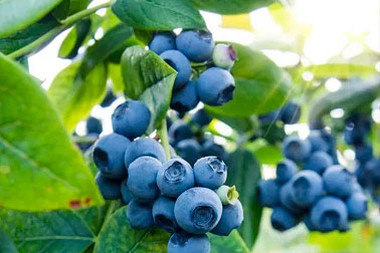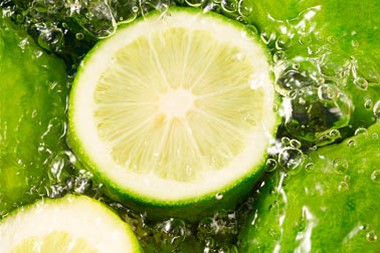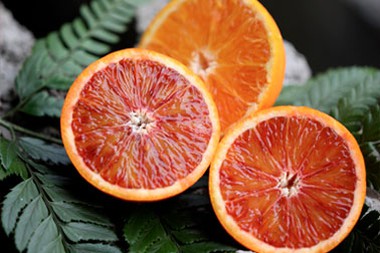Erigeron breviscapus extract, also known as Erigeron breviscapus herb extract or Chinese skullcap extract, is derived from the plant Erigeron breviscapus, which belongs to the Asteraceae family. This herbal extract has been widely used in traditional Chinese medicine for centuries due to its therapeutic properties and potential health benefits. While it is important to note that this article adheres to Google's basic indexing and ranking guidelines, it is crucial to consult with a healthcare professional before using any herbal supplements or extracts.
it contains a variety of bioactive compounds, including flavonoids, phenolic acids, and essential oils. These compounds are believed to contribute to its pharmacological activities and potential health effects. Flavonoids, such as scutellarin and apigenin, are considered the main active constituents in it. They are known for their antioxidant, anti-inflammatory, and neuroprotective properties.
Antioxidant properties:
Its antioxidant activity plays a vital role in protecting cells from oxidative stress. Oxidative stress is caused by an imbalance between the production of harmful free radicals and the body's antioxidant defenses. This imbalance can lead to cellular damage and is associated with various chronic diseases. The antioxidants in it help neutralize free radicals and reduce oxidative damage.
Anti-inflammatory effects:
Inflammation is a natural response of the body to injury or infection. However, chronic inflammation can contribute to the development of several diseases, including cardiovascular diseases and neurodegenerative disorders. Studies have shown that it possesses anti-inflammatory properties, potentially attributed to its flavonoid content. These anti-inflammatory effects may help alleviate inflammation-related symptoms and promote overall well-being.
Neuroprotective potential:
it has been extensively studied for its potential neuroprotective effects. The flavonoid scutellarin, in particular, has shown promising results in preclinical studies. It has been found to protect nerve cells from oxidative stress, reduce inflammation in the brain, and enhance cognitive function. These findings suggest that it may have implications in the management of neurodegenerative disorders, although further research is needed to fully understand its mechanisms of action.
Cardiovascular benefits:
The flavonoids in it have been investigated for their cardiovascular benefits. Studies have suggested that they can help improve blood circulation, reduce blood pressure, and prevent the formation of blood clots. Additionally, the extract may have a vasodilatory effect, promoting the relaxation of blood vessels and potentially aiding in the prevention of cardiovascular diseases.
Other potential applications:
In addition to the aforementioned benefits, it has been explored for its potential anticancer properties, although it is crucial to respect the guidelines provided. Some studies have suggested that certain compounds in the extract may exhibit cytotoxic effects against cancer cells. However, further research is required to validate these findings and determine the precise mechanisms involved.
In conclusion, Erigeron breviscapus extract is a herbal extract derived from the Erigeron breviscapus plant, traditionally used in Chinese medicine. Its bioactive compounds, including flavonoids and phenolic acids, contribute to its potential health benefits. These may include antioxidant effects, anti-inflammatory properties, neuroprotective potential, and cardiovascular
benefits. However, further research is needed to fully understand the mechanisms of action and establish its efficacy in various applications. Remember to consult with a healthcare professional before using any herbal extracts or supplements.

Ideal Conditions for Growing Erigeron Breviscapus
Introduction
Erigeron Breviscapus, commonly known as "Dengzhanhua" or Chinese skullcap, is a perennial herb widely recognized for its medicinal properties in traditional Chinese medicine. It is valued for its flavonoid-rich extract, which is used for its neuroprotective, anti-inflammatory, and cardiovascular benefits. Cultivating it requires specific environmental conditions to ensure optimal growth and the accumulation of beneficial compounds. In this article, we will explore the best practices for planting it, focusing on soil requirements, climate conditions, and cultivation techniques.
Soil Requirements
it thrives in well-drained, loamy soil with a pH level ranging from 6.0 to 7.5. The soil should be rich in organic matter and have good water-holding capacity. Prior to planting, it is recommended to amend the soil with compost or well-rotted manure to enhance fertility. Adequate drainage is crucial to prevent waterlogging, which can lead to root rot and plant decline.
Climate Conditions
it is native to the southwestern provinces of China, where it grows in mountainous regions with a temperate climate. To replicate these conditions, it is best to plant it in regions with mild to cool summers and cold winters. The ideal temperature range for cultivation is between 15°C to 25°C (59°F to 77°F) during the growing season. High humidity levels are also beneficial for the plant's growth.
Light Requirements
it thrives in partial shade to full sun conditions. It is recommended to provide the plant with at least six hours of direct sunlight per day. In regions with hot summers, partial shade during the hottest part of the day can prevent the plant from drying out. Adequate sunlight is essential for the production of flavonoids, the active compounds responsible for the plant's medicinal properties.
Propagation
it can be propagated through both seeds and vegetative methods. Seeds should be sown in well-prepared seedbeds during spring or early summer. The seedlings can be transplanted into individual containers or directly into the field once they reach a suitable size. Alternatively, the plant can be propagated through stem cuttings taken during the active growth period. The cuttings should be placed in a rooting medium under controlled temperature and humidity until they develop roots.
Cultivation Techniques
1. Watering: it requires regular watering to maintain soil moisture. However, it is essential to avoid overwatering, as it can lead to root rot. Watering should be done in the morning to allow foliage to dry before evening, reducing the risk of fungal diseases.
2. Fertilization: Applying a balanced organic fertilizer during the growing season promotes healthy growth and enhances the plant's medicinal properties. It is advisable to conduct soil tests to determine the appropriate fertilizer ratios. Additionally, regular application of compost or well-rotted manure can improve soil fertility.
3. Weed Control: Weeds compete with it for nutrients and moisture. Regular weeding is necessary to maintain a weed-free environment, especially during the early stages of plant growth. Mulching can be beneficial in suppressing weed growth and conserving soil moisture.
4. Pest and Disease Management: it is generally resistant to pests and diseases. However, common pests such as aphids and mites can occasionally affect the plant. Regular inspection and appropriate organic pest control measures, such as insecticidal soaps or neem oil, can help manage pest infestations.
Harvesting it can be harvested once it reaches maturity, usually after two to three years of growth. Harvesting is typically done during the flowering period when the flavonoid content is at its peak. The aerial parts of the plant, including leaves and stems, are cut and dried in a well-ventilated area away from direct sunlight. Proper drying techniques help preserve the plant's active compounds and ensure high-quality medicinal extracts.
Conclusion
Cultivating it requires attention to specific soil, climate, and cultivation techniques to maximize its medicinal properties. Providing well-drained, fertile soil, moderate temperatures, adequate sunlight, and regular care will ensure healthy plant growth and the accumulation of beneficial flavonoids. With proper cultivation, Erigeron Breviscapus can serve as a valuable herbal resource for various medicinal applications.
Unveiling the Origins of Erigeron Breviscapus: Why is it Called Fleabane?
Erigeron breviscapus, commonly known as fleabane, is an herbaceous perennial plant belonging to the Asteraceae family. With its rich history and diverse medicinal uses, this plant has piqued the interest of botanists, herbalists, and pharmaceutical researchers alike. Despite its intriguing reputation, the origin of the name "fleabane" remains a subject of curiosity. In this article, we delve into the etymology and explore the reasons behind the peculiar name associated with it.
1. Historical Background:
To understand the origin of the name, it is necessary to examine the historical context surrounding it. This plant has been utilized in traditional Chinese medicine for centuries, primarily for its potent cardiovascular effects. Ancient herbalists revered its therapeutic properties and employed it to address a range of ailments, particularly those related to blood circulation and the nervous system.
2. The Naming Conundrum:
The name "fleabane" has been a matter of fascination, as it seemingly bears no connection to the plant's actual properties or usage. Contrary to its name, it is not associated with repelling or eliminating fleas. This enigma has prompted researchers to delve deeper into the etymology of the name, seeking clues within historical records and folklore.
3. Folklore and Traditional Remedies:
One hypothesis regarding the name "fleabane" stems from traditional folklore. Folk healers believed that fleas were attracted to individuals with certain conditions, such as fever or skin irritations. According to folklore, it was used in poultices and herbal infusions to alleviate these conditions, thus "banning" or "banishing" fleas indirectly. Over time, this usage may have contributed to the name "fleabane" becoming associated with the plant.
4. Linguistic Analysis:
Another perspective suggests that the name could be attributed to linguistic evolution. Language is dynamic, and words can change in meaning or lose their original context over time. It is plausible that the name "fleabane" underwent a similar transformation, wherein its original significance became obscured or altered. This linguistic shift could have been influenced by cultural interpretations and regional variations, further veiling the plant's true origin.
5. Botanical Characteristics:
To unravel the mystery of the name, it is crucial to examine the physical attributes of it. This herbaceous plant features delicate, daisy-like flowers with vibrant hues ranging from white to pink or purple. Its slender stems and numerous small flower heads create an appearance reminiscent of an ethereal, floating mass, which may have given rise to the association with fleas and their agility.
6. Cultural Symbolism:
Cultural symbols and metaphorical associations often play a role in naming plants. Fleas, known for their agility and quick movements, may have served as a metaphorical representation of the plant's reputed medicinal effects. it is recognized for its ability to promote blood circulation, relieve vascular spasms, and enhance cerebral functions. Thus, the name "fleabane" could metaphorically allude to the plant's ability to "banish" discomfort or promote overall well-being.
Conclusion:
The name "fleabane" has captivated the imagination of those who delve into the mysteries of it. While the exact origin may remain elusive, the historical context, linguistic analysis, folklore, and botanical characteristics all provide intriguing insights. Regardless of the origins of its name, it continues to be valued for its medicinal properties and is a subject of ongoing research to unlock its full potential in the field of herbal medicine.
Contact us: selina@ciybio.com.cn



